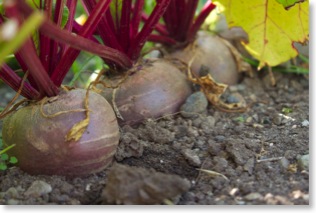Gardening and Systems
Pedagogy

Pedagogy Question: Consider your discipline, how might you use gardening to explain aspects of what you teach?
Crazy Garden Systems (An activity for you and your students!)
Creativity is contagious. When people are laughing and having fun, they tend to play off of each other’s imagination.
This activity allows for the group to share in a creative process and explore how systems work without knowing everything about a system. Think about the systems in a garden. Below are some examples. Can you think of others?
- Ecological systems (rain cycle, plant reproduction system, pollination system)
- Physics systems (sun and season systems, gravitational systems in plant tips, soil and water systems (osmosis and water tension).
- Chemical systems (nutrient cycles, pheromone communication among insects, leaf colouration, photosynthesis)
- Historical systems (the first gardeners, crop rotation, human-plant relationships)
Form groups of five to eight people sitting in a circle. Each person should have a piece of paper and a few pens and pencils. Tell each person that they have 45 seconds to draw the first part of any garden system (e.g. rain from a rain-cloud). After the first 45 seconds, call out “pass to the left.” Ask them to try to figure out what the system is that they just received and add to it and have fun with it! Give them another 45 seconds and call out “pass to the left.” Keep repeating until the papers have gone around the entire group. The point of this activity is to create a ‘crazy’ system on each piece of paper. These systems will not all be accurate, but they create fabulous pictures to start great conversations.
Activity Questions: Once the systems have been passed around, ask your group members to write the original system’s name on the top of the page, and then a new name for the system at the bottom of the page based on their interpretation. Ask the groups to share their systems with each other on a voluntary basis. Then ask your students to look at each others’ systems. Are there any common ideas, relationships, or functions? What do they look like? Do they remind people of other systems?
blog comments powered by Disqus
